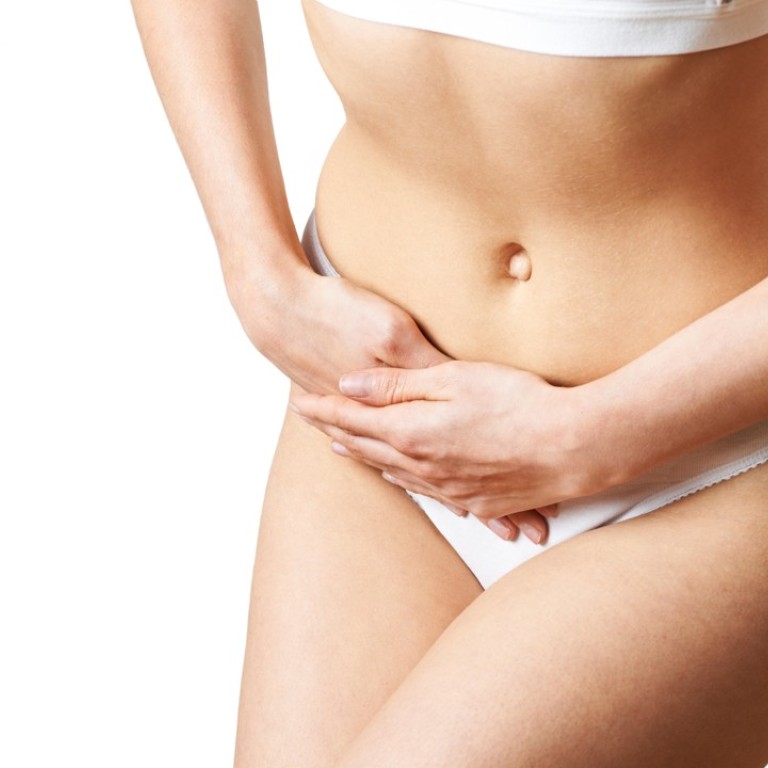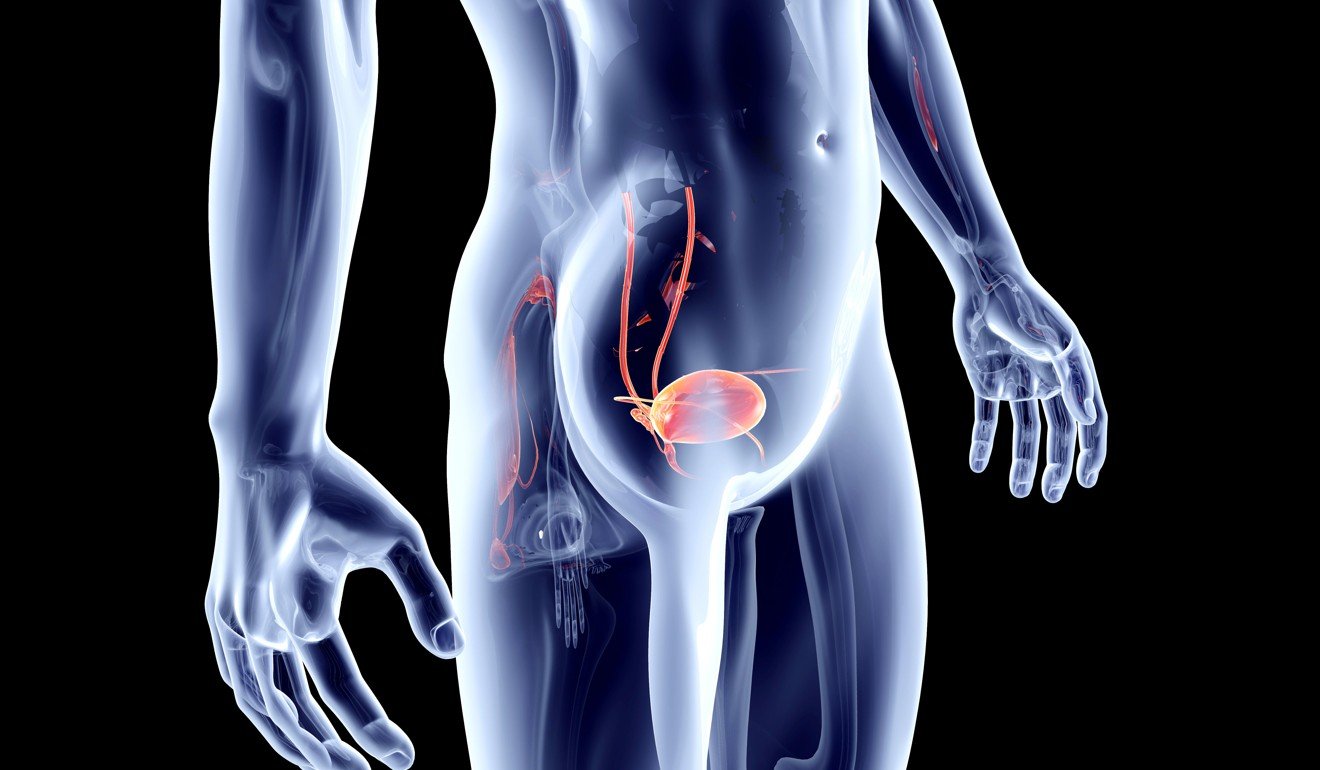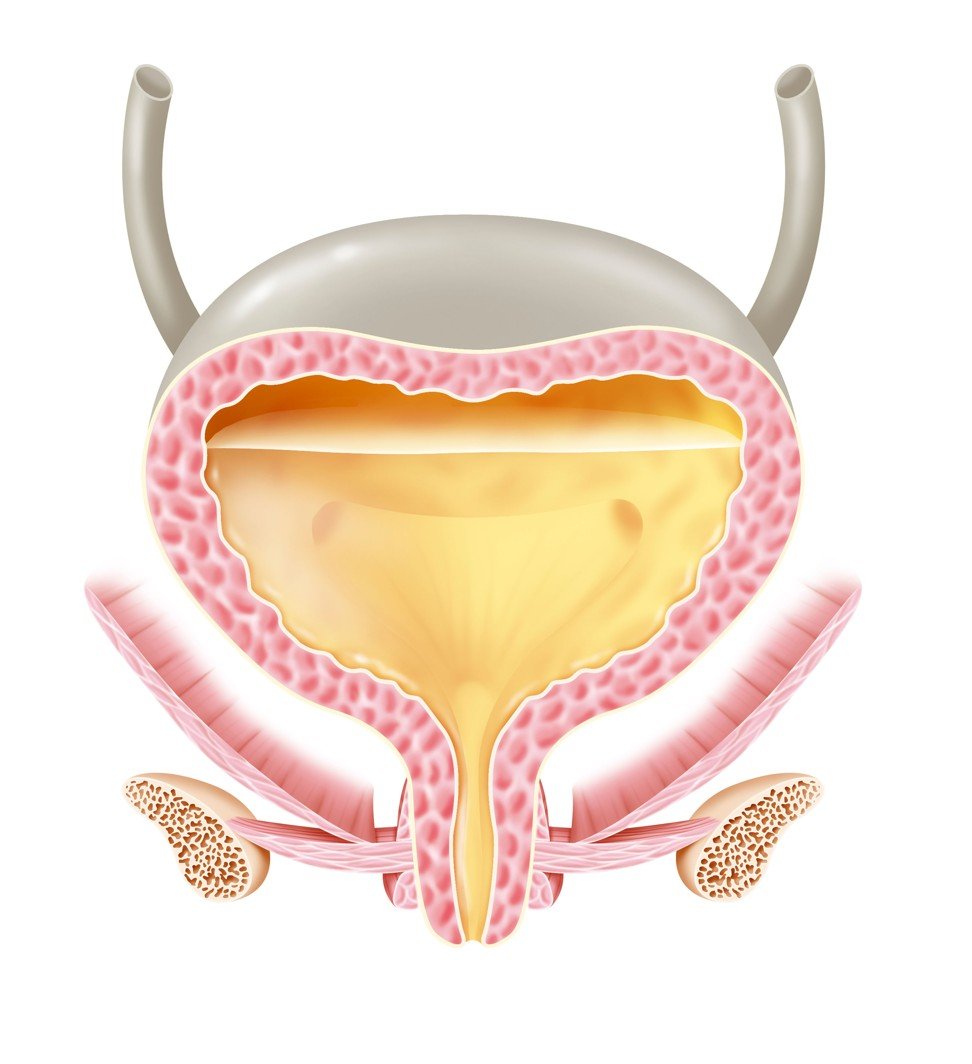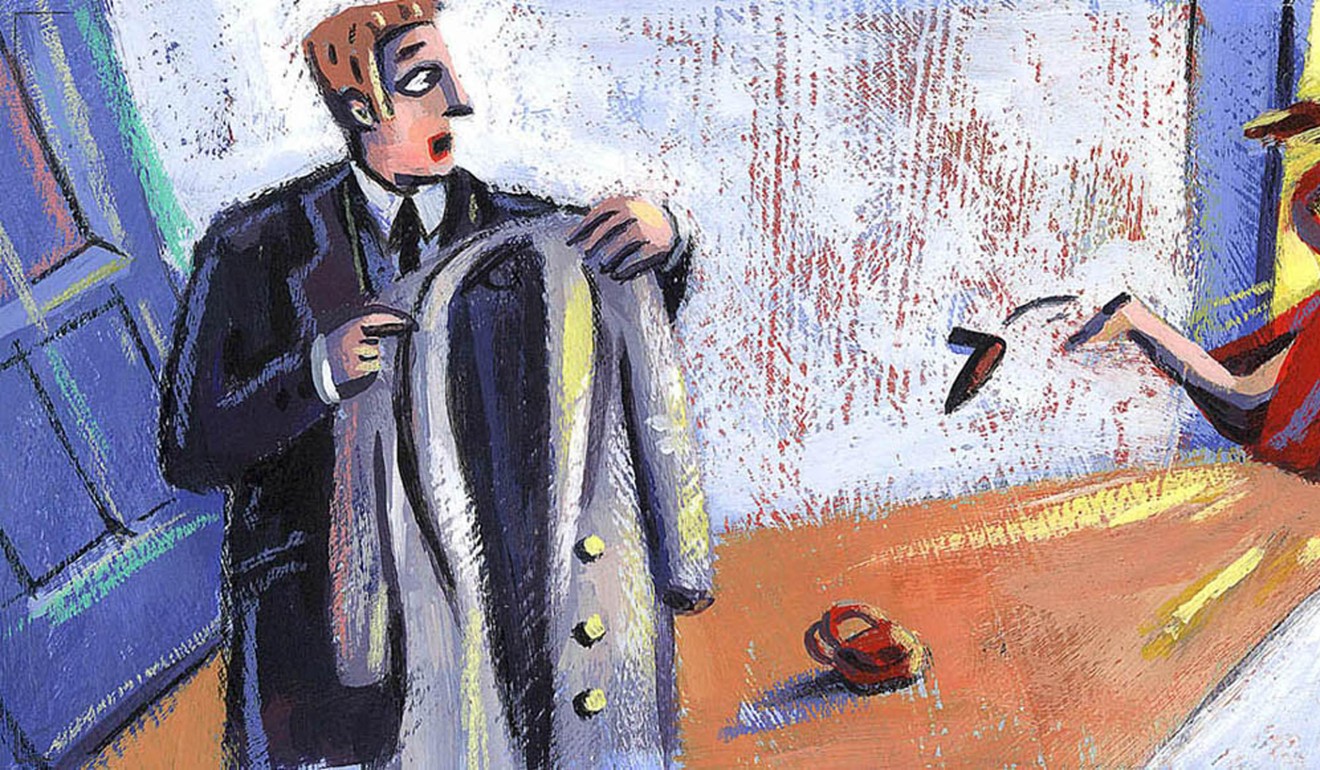
How the bladder works, what can go wrong with yours and five pee myths busted
- The bladder is a grapefruit-sized expandable bag that signals when it needs emptying; it can be affected by cystitis, incontinence, infections and overactivity
- Your questions answered, from whether your bladder can burst to whether you should drink your own pee
The bladder – a neat little bag that is located under the kidneys, tucked behind the pelvic bone – is a pretty cool organ, but most of us don’t think about it until we need to empty it. About the size of a grapefruit, it can stretch substantially and hold up to half a litre of pee for as many as five hours reasonably comfortably (the sensation of needing to pee begins when it’s about half full, 200ml to 300ml). After it’s emptied, it neatly pings back into shape.
The bladder is connected to the kidneys by two tubes called ureters. When urine is produced by the kidneys, it travels down the ureters to the bladder, ready to be expelled when we have a pee.
Cosmetic vagina surgery, why it’s on the rise, and the risks
The bladder is composed of four layers: the epithelium (the little ridges – rugae – on this inner lining make the bladder expandable), the lamina propria, detrusor muscle (when this contracts, the muscles in the urethra relax and your bladder knows it’s time to empty) and the outer layer, the perivesical soft tissue.
As the bladder fills, it sends a signal to the brain, which in turn sends the message to empty the bladder. If all the messages happen in sequence, you’ll pee.

While we have some control of our bladders, we have none over our kidneys. It takes time for the brain/bladder signalling system to fully develop, which is why we shouldn’t try to potty train young children too early. A child less than a year old usually has no control over their bladder or bowel movements; the sensory development doesn’t happen until between the ages of two and two and a half.
Colder weather and less sunlight are linked to more drinking, global alcohol study finds
A healthy bladder should empty fully every three to four hours, you shouldn’t have to get up more than once a night to use the loo (perhaps twice as you get older), it shouldn’t leak and it should give you enough time to get to the loo once your brain has sent the message that you need to go; a healthy bladder means you can safely ‘hang on’ for a bit.
But, as with all organs in the body, things can go wrong. Sometimes the signalling system between bladder and brain fails and the muscles don’t respond as they ought to. Sometimes urine pools in the bladder because it doesn’t completely empty, leading to infection, and sometimes the muscles in the pelvic floor are weakened causing incontinence.

Consultant urologist at Hong Kong’s Union Hospital Cho Chak-Lam says, “the most common functional bladder problem across all age groups is overactive bladder (OAB), the most common symptoms of which include urinary incontinence associated with urge, difficulty holding urine, and frequent voiding”.
OAB usually comes with an urge to urinate more frequently than is needed. Increased daytime and nighttime urgency are symptoms, as is leakage. Many more people struggle with OAB than are treated; embarrassment stops people seeking help as does the myth that this is a normal part of ageing.

Lots of things can cause OAB. It can be due to a neurological disorder, although that is rare. it is more likely to be down to stress, drinking caffeinated carbonated drinks, green tea or mint tea.
The amount you drink is less likely to irritate your bladder than what you drink. In fact, limiting fluid intake can exacerbate the problem (and cause other issues), because if the bladder never fills, it loses its ability to stretch and compromises the complex signalling system.
Additionally concentrated urine further irritates the bladder.
Treatment for OAB includes anticholinergics which block neurotransmitters to the bladder.
Stress urinary incontinence is another condition that can affect the bladder; sneezing, coughing or laughing can cause leakage – sometimes this is age related, but for many women it’s a result of vaginal childbirth. There are non-surgical and surgical treatment options, but pelvic floor exercises can help post-delivery.

Susannah Fraser, 50, a is communications and media manager for Bladder Health UK. She lives with another disabling – and often misdiagnosed – bladder condition.

“I first experienced bladder problems at 28. I suffer from interstitial cystitis/bladder pain syndrome. In my 40s I began to suffer from recurrent urinary tract infections and chronic infections. The reason for the development of interstitial cystitis is not known, it’s classed as a rare disease, but many experts believe that it is more common that people realise. Recurrent UTIs are not uncommon,” she says.
“It causes me pain on a daily basis, sometimes severe, sometimes moderate,”, she says, adding the pain is equivalent to that experienced in the end stages of cancer and quality of life has been likened to those with multiple sclerosis or similar diseases. As a result, Fraser is only able to work part time.
I first experienced bladder problems at 28. I suffer from interstitial cystitis/bladder pain syndrome … It causes me pain on a daily basis, sometimes severe, sometimes moderate
“Travelling is difficult, it is impossible to get a good night’s sleep with the pain and frequency, all areas of my life are adversely affected by the condition. Over the past few years I have become resistant to some antibiotics as a consequence of repeated infections and treatment.”
No one knows what causes this condition and there is no cure, only management. Fraser has adopted “lifestyle changes in terms of diet and not allowing myself to become overtired. I have medication to lessen the frequency and pain medication.”
So how best to look after your bladder to help minimise the risk of infection and illness? While ‘going just in case’ (emptying your bladder before an exam, a meeting or a long drive) can make your bladder restless and may lead to OAB, it’s also not a great idea to hang on too long. Holding on for up to an hour is OK; longer than that can cause overexpansion of the bladder which puts pressure on the kidneys and can lead to an inability to empty the bladder altogether which in turn can lead to urinary tract infections and a loss of healthy kidney function.
Why ovarian cancer is deadly: disease can’t be detected in its early stages
Drinking plenty of water throughout the day can also help promote bladder health by preventing bladder stones and diluting urine. How much we drink is determined by activity, weight and weather, we’re all a little different, but between one and two litres a day is a healthy norm.

Bladder/pee myths
Can holding on too long kill you?
In 2007 Jennifer Strange died after entering a radio competition called “Hold your wee for a Wii”; she drank seven litres of water without going to the loo. Cause of death: “acute water intoxication” all in an effort to win a Nintendo.
Can your bladder burst?
Tycho Brahe, a 1600s astronomer, was said to have died from a burst bladder after refusing to leave a party to relieve himself because he was having too much fun drinking. It’s unlikely this was really the cause – a blow to the abdomen, such as that sustained in a car accident, might rupture the bladder but otherwise it’d be rare and certainly not the result of hanging on too long. Pee would leak out long before that happened.
It’s more likely Brahe was suffering with an enlarged prostate gland which can stop the bladder emptying properly. It’s why older men, with prostrate problems, have such problems peeing.
Can you pee too often?
Yes, you can. While holding on isn’t optimum, a little bit of holding on promotes bladder control and is good for the pelvic floor. It’s bad to go too often and it’s bad to go too infrequently. You should go four to seven times a day.

Is “breaking the seal” real?
No, it is a load of rubbish. Pub goers all try to avoid “breaking the seal” – that is the moment you relent and go to the loo, after too many pints, the more you’ll have to go and will spend more time in the bathroom than at the bar. Doctors says this is nonsense, once your bladder is full, your bladder is full and you need to go.
Can you drink your own pee?
Bush lore has it that if you are stranded in the desert without water, you can drink your own pee. And certainly drinking your own urine was once advocated in ancient Rome, Greece, and Egypt. Once upon a time, doctors tested for diabetes by tasting a patient’s pee (an early sign of diabetes can be thirst and frequent peeing).
In 1945, John W Armstrong, a British naturopath published “The Water of Life: A Treatise on Urine Therapy,” which claimed that urine could cure all major illnesses, that those at death’s door needed consume nothing but their own pee for several weeks and have it massaged into their skin daily and they’d get well.
But pee is not sterile and you shouldn’t drink it. There’s no real evidence to suggest drinking your own pee is good for you. It could introduce bacteria into your system and put pressure on your poor kidneys, the very organs that have just worked so hard to get rid of it in the first place.

